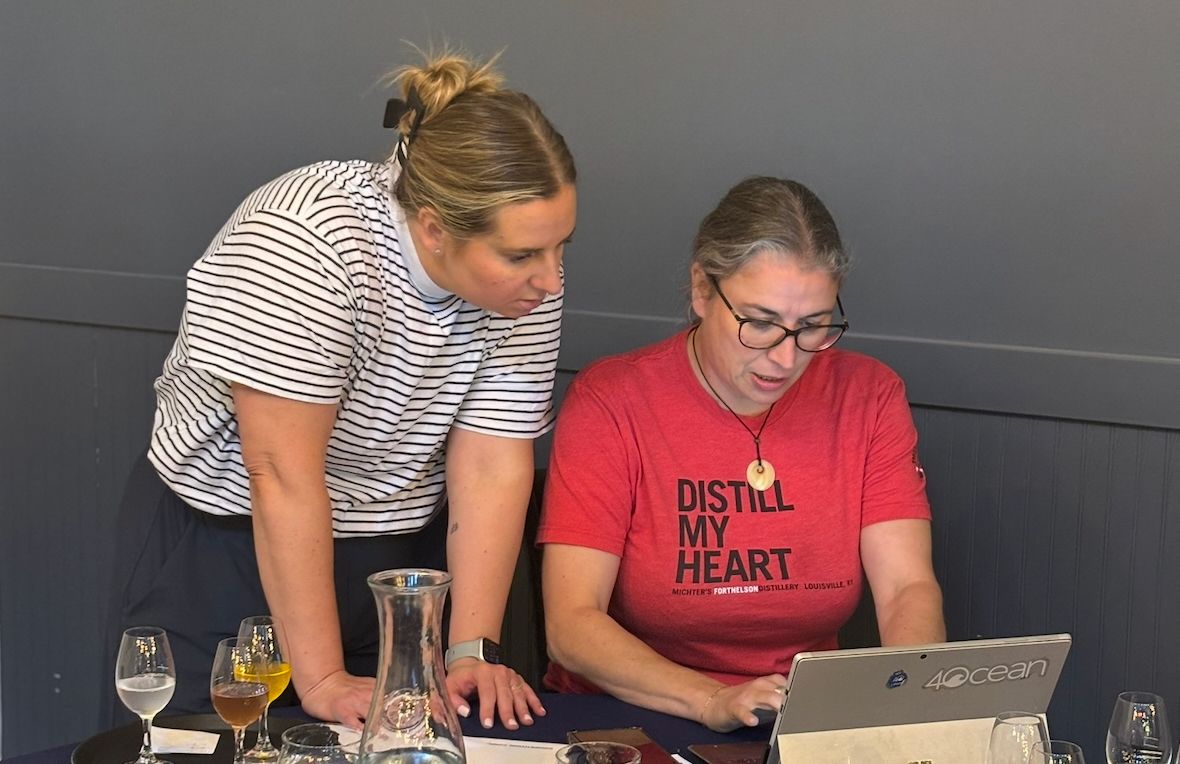Apart from the 10 vintages of Clos L’Eglise one of the discoveries of the tasting was how well the Lévêque’s new Saint-Emillion estate Poesia was drinking, this is a wine that is well worth keeping your eye on.
With the 2015 vintage of Clos L’Eglise, Hélène and Patrice Lévêque were the first estate in the Right Bank commune of Pomerol to pick and the last to pick the grapes. Unlike the ‘religion’ of Bordeaux that states that you must pick all your grapes at optimum ripeness, this unconventional husband and wife vigneron team blend from different parcels with varying levels of ripeness.
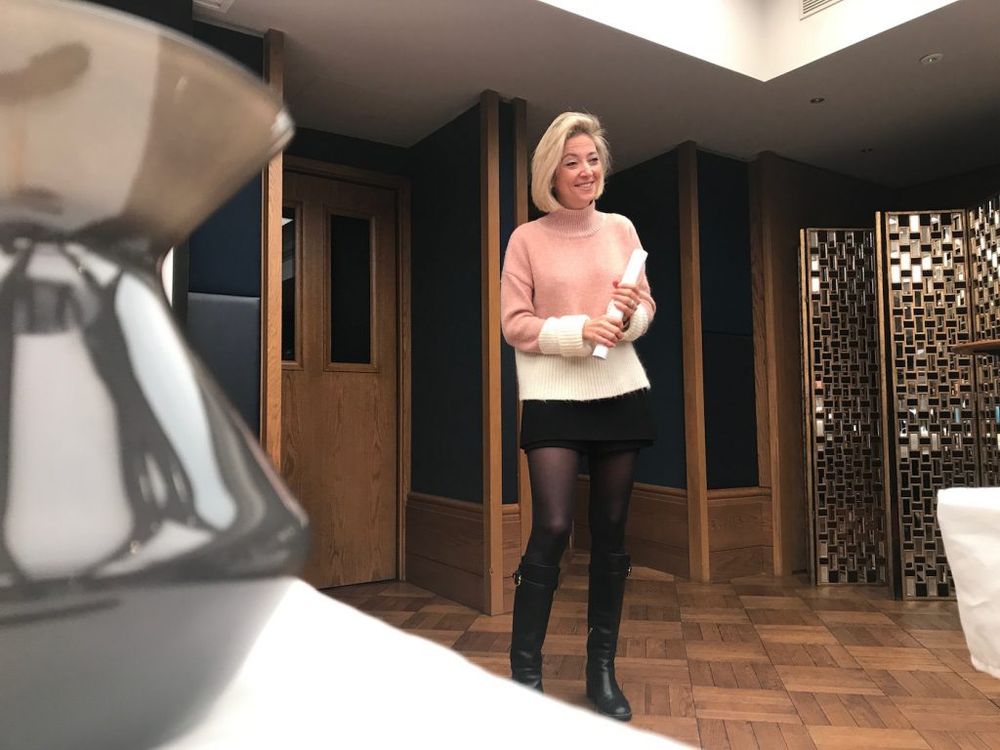
Hélène Lévêque delivering the Clos L’Eglise masterclass at London’s 67 Pall Mall
“I am not a very religious person you see,” Hélène says with a twinkle, “it’s boring if there is only one way of doing things and I go away from people who have very set ideas.”
She explains that this winemaking style came from Patrice’s experience of making white wine at Haut-Bergey, a property in Pessac-Léognan, that is now run by Hélène’s brother. Maturity of the grapes comes at different times owing to the different soil types, so they are picked at different times and vinified separately with one tank therefore having more prominent fruit, for example, while another has better structure.
“We believed that what we had been doing for the whites we could do for the reds. All of the fruit is picked ripe of course but there are differences such as how chewy the fruit is, whether the seeds are ripe or not, this is all based on feelings in the mouth and common sense.”

This blending process of very different ripeness levels respects the terroir but perhaps even more importantly brings complexity to the wine. It is for the same reason that after two vintages the Lévêques ditched the optical sorting equipment.
“The optical sorter tries to pick ripe, perfect fruit but the trouble is that it becomes too uniform and we lose complexity in the wine. By starting the harvest early and finishing late we get a much wider range of ripeness, which is not how it used to be, but what we gain is complexity and elegance.”
One word that Hélène comes back to again and again during this 2-hour sommelier masterclass is ‘equilibrium’ – what they are trying to achieve is a balance that will allow the wines to respect the terroir, be complex, elegant, age worthy and have a little je ne sais quoi.
“We don’t make perfect wines – I don’t think a perfect person is that interesting – in fact I don’t believe that a perfect wine really exists. What we are trying to find is a wine that gives you goosebumps.”
“Each vintage is very different and we have to ask ourselves what is our influence? At some point terroir takes over, we have to be very modest about our winemaking.”

Other changes that Hélène and Patrice have implemented at Clos L’Eglise during a period of heavy investment are: changing the vinification tanks from wood to 55 hectolitre steel; changing the 100% new French oak ageing barrels from 225 litre to 300 litre as a way of “respecting the fruit – oak is there to increase complexity and bring flavours but it is not the main component… it is like structure in a wine, it is good to get it but it’s not everything”; And no SO2 unless needed in the event of a very tricky vintage or if there is botrytis.
Then there are the other wineries owned and run by Hélène and Patrice:
- Château Barde-Haut which was bought in 2000 and promoted to Grand Cru Classé in the 2012 classification of Saint-Emilion
- Bodega Poesia in Argentina that was acquired in 2001
- Poesia Saint-Emillion Grand Cru that was bought in 2013
Hélène’s mother Sylviane Garcin-Cathiard also owns two properties in Pessac-Leognan.
Hélène describes how she and Patrice use their Argentinian winery Bodega Poesia to experiment with changes, such as increasing the barrel size, before introducing them into their three Bordeaux properties.
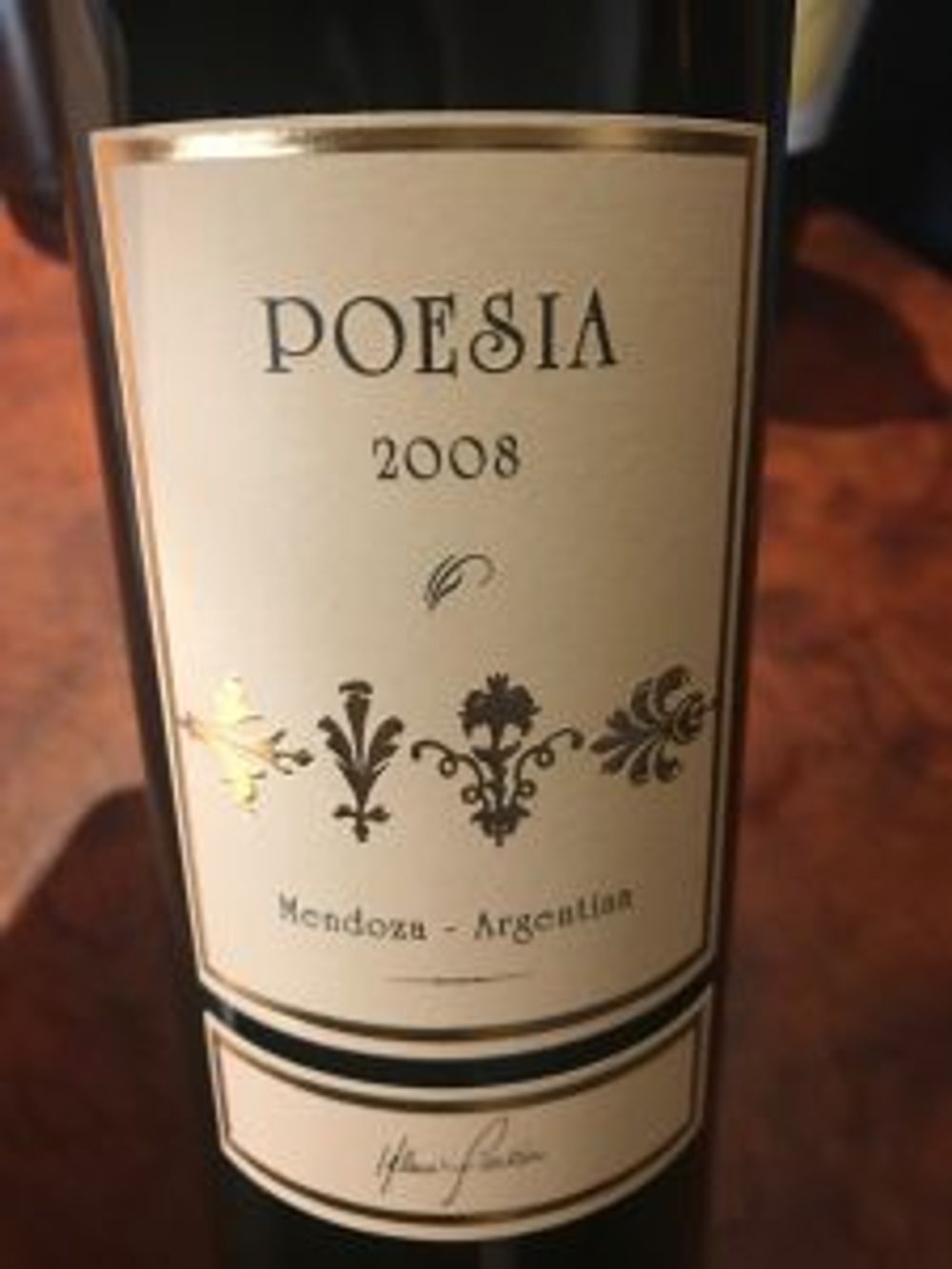
The top end cuvée from Bodega Poesia respects the terroir in that 60% is made up of Malbec and 40% Cabernet Sauvignon, but one thing they will never do, Hélène insists is to make these wines more fruit-forward or riper to enable easier, earlier drinking.
“If we made a uniform style how could the wine be interesting year after year? Ageing is the key thing. We never think that a wine should be drunk tomorrow, we make them for ageing, we never think of a wine before at least five years after bottling.”
So how were the back vintages tasting?
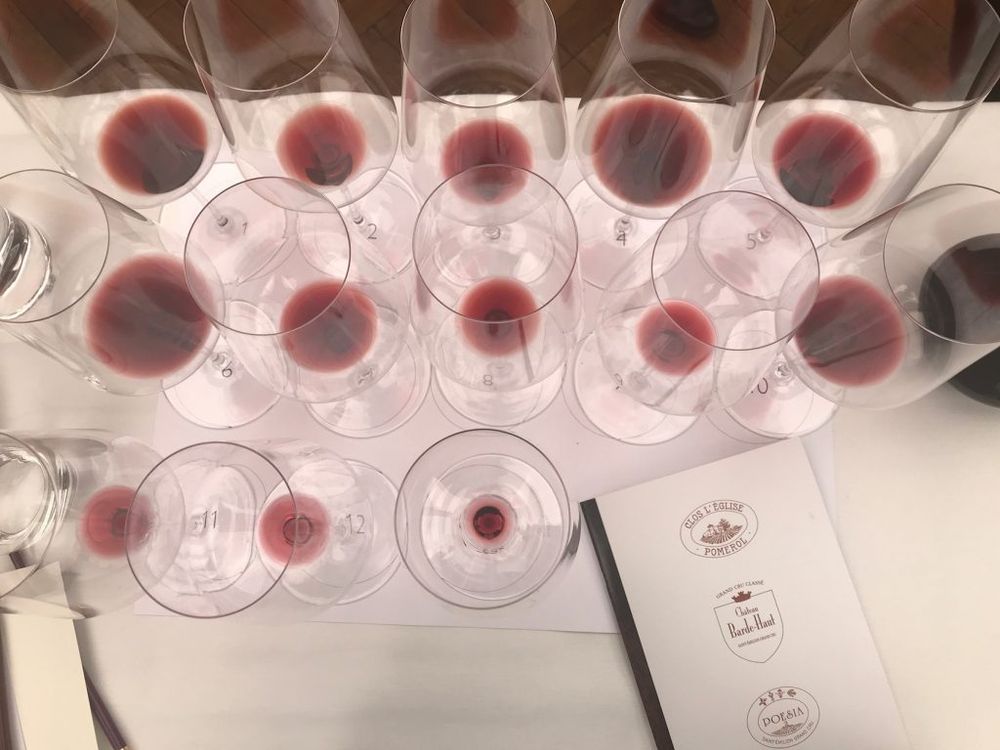
10 wines from Clos L’Eglise plus a couple of little surprises – all tasted blind
The differences in the vintages is marked and a key part of a fascinating blind tasting of 10 back vintages of Clos L’Eglise, a wine that is made of 80% Merlot and 20% Cabernet Franc. The wine is noted for its voluptuousness, silky smooth tannins and spicy character that is more pronounced in some vintages.
Nine of the wines are served in trios and, as we later discover, represent :
- how Clos L’Eglise behaves in difficult vintages (2004, 2006, 2007)
- very good vintages that are not recognised as such (2001, 2012, 2014)
- classic vintages that are the Lévêque’s favourites (2000, 2005, 2010)

2001 is a ‘sleeper’ vintage in that it got overshadowed by the magnificent 2000 – it was drinking beautifully and is currently good value
The final trio we taste are three wines from 2015 from the Lévêque’s three properties in Bordeaux. And we also tasted a 2008 Bodega Poesia that was impressive in all stages apart from the finish where the fruit fell away a bit.
Of the back vintages of Clos L’Eglise the classic vintages were all drinking very well and corresponded to what you would expect from each vintage. Of the other six I would recommend 2001, 2004 and the 2012 in that order and all represent good value for money, the 2001 and 2004 are drinking very well the 2012 I would hang onto.
What was also noticeable was how well the Saint-Emillion Poesia was drinking. The 2015 is only the proper second vintage (the first 2013 was ruined by the hail) and this had a real elegance, minerality and almost tart notes of blackcurrant with the Cabernet Franc quite pronounced in the mix. The wine is currently unavailable in the UK but that will hopefully get rectified soon – at a fifth of the price of the Clos L’Eglise it represents excellent value and was well received by the largely sommelier audience.
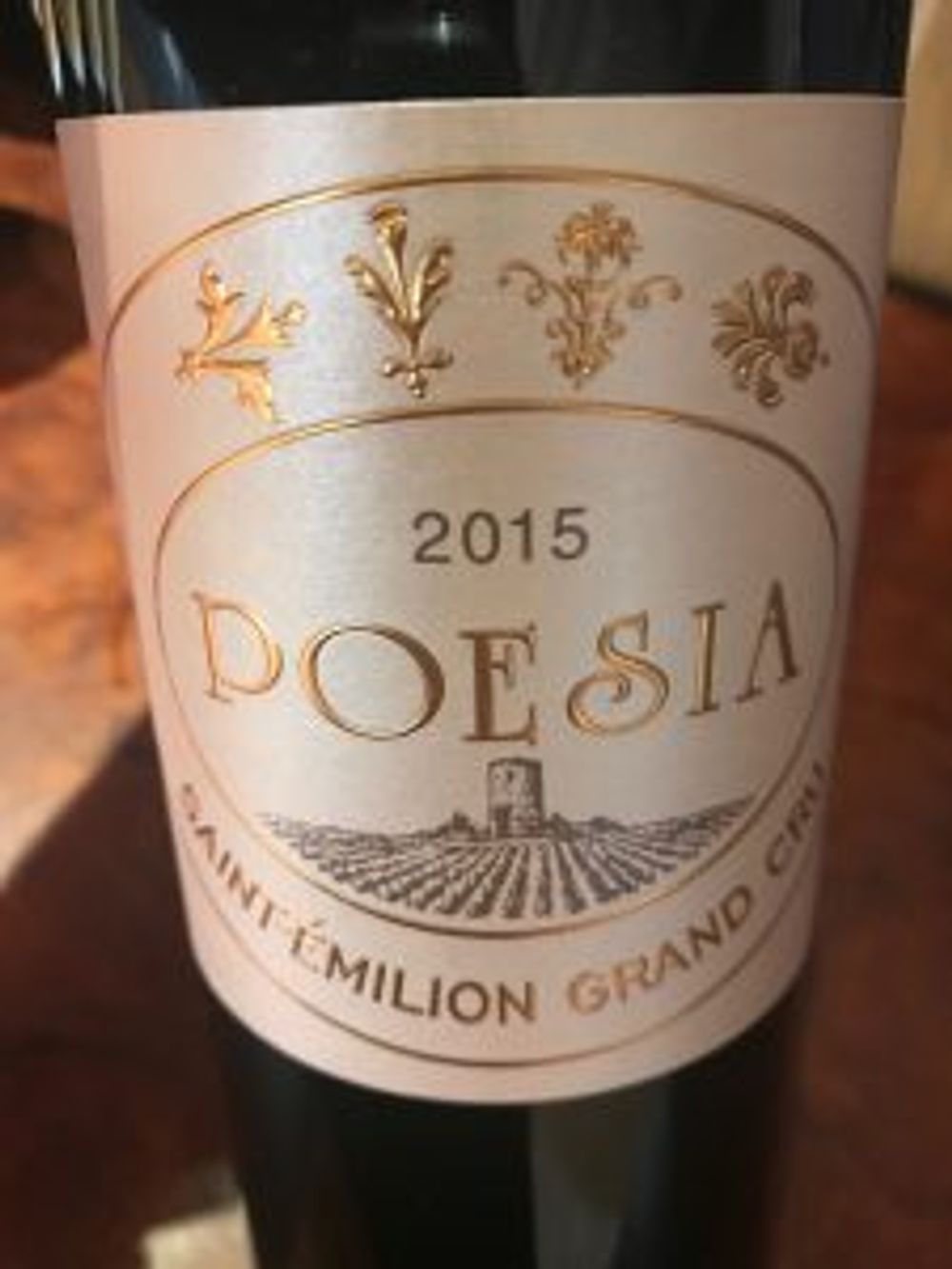
Hélène explains that Poesia sits on top of the highest of the three plateaus around Saint-Emillion and has solid limestone visible through the shallow clay soil. She believes it has better terroir even than Clos L’Eglise and has great expectations for the wines they will make in the future, although (with just a little damp squib) believes they will need 20 years cellaring before you can appreciate them at their best.
“There is still so much we don’t understand about wine which is why it’s so magical.”

